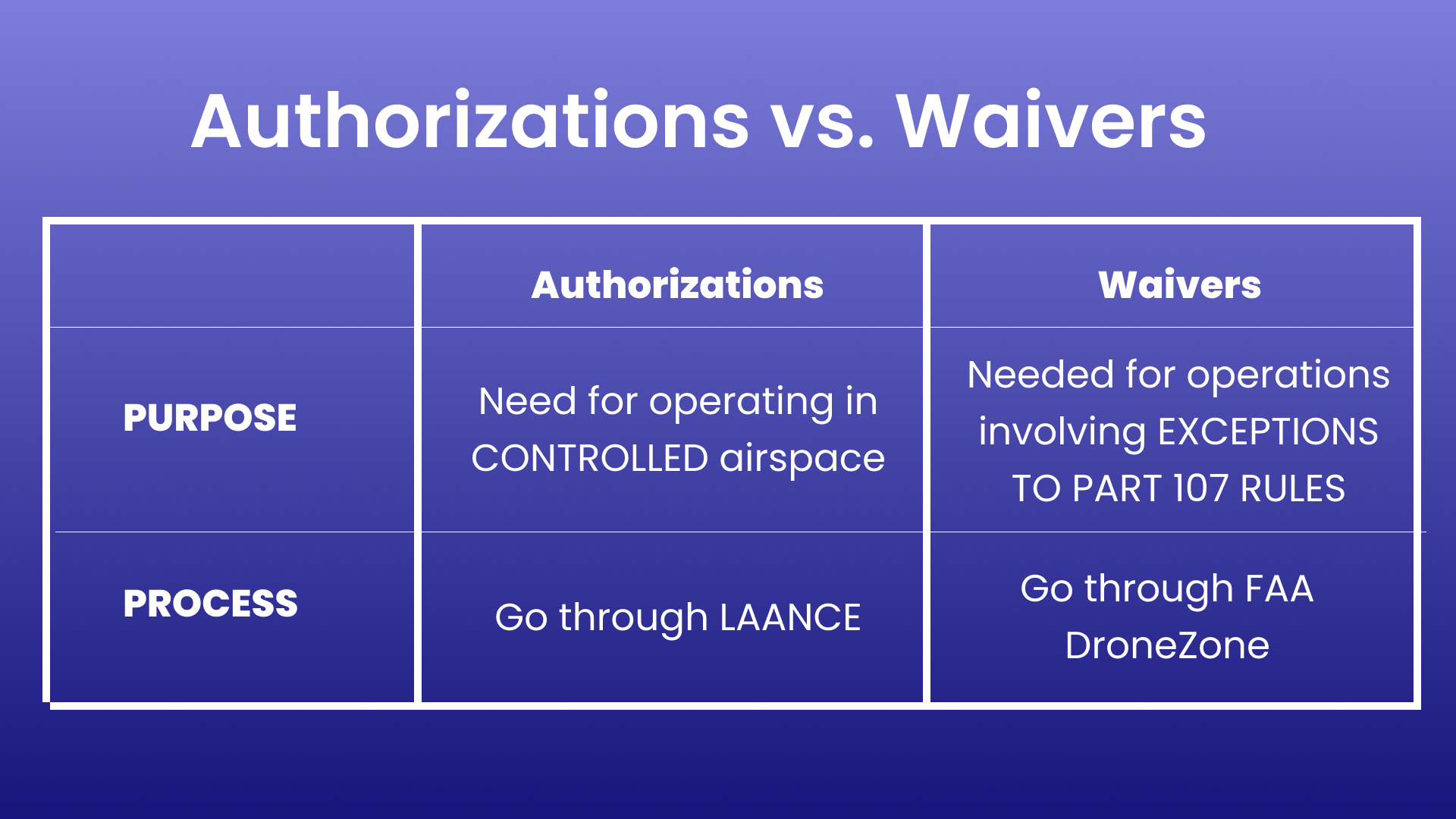Required Documents for Commercial sUAS Operations
If the FAA requests documents, the remote pilot-in-command must provide their Remote Pilot Certificate, UAS rating registration, government-issued photo ID, and any relevant documentation. These materials verify the pilot’s qualifications and the drone’s compliance with regulations.
Relevant Documentation
Remote Pilot Certificate:
This certificate confirms your eligibility to fly drones commercially under Part 107. Make sure to have your Remote Pilot Certificate with a small UAS rating readily available.

Drone Registration Card:
Always carry your drone registration card, confirming that your drone is registered with the FAA.
The FAA allows you to carry your drone registration card electronically. You can save a digital copy on your smartphone or another device to present if requested
(If applicable) Part 107 Waiver or LAANC Authorization:
Provide any FAA-issued Part 107 Waiver or LAANC authorization required for the specific operation. This authorization grants permission for specific activities, such as flying in controlled airspace.
(If applicable) Copy of Completion Certificate for Recurrent Training:
If you have done so, have a copy of the Recurrent Training Completion Certificate, as this demonstrates your compliance with the latest safety regulations and procedures.
Authorizations vs. Waivers
While they may sound like similar requests, authorizations and waivers differ in their purpose and where you need to apply for them.
Authorizations: permissions granted by the FAA to operate in controlled airspace.
Waivers: exemptions from a specific Part 107 regulation.
Authorizations:
Authorizations are typically for a specific area, altitude, and time frame, allowing drone operations in controlled airspace where air traffic control (ATC) permission is required.
Application Process:
Applications for authorizations are made through what is referred to as LAANCE (Low Altitude Authorization and Notification Capability). LAANC is an automated system that provides drone pilots with real-time authorization to fly in controlled airspace at or below 400 feet.
LAANC Authorization Examples:
- Flying in Controlled Airspace, such as near an airport
- Operations in a National Park
- Flying during a Temporary Flight Restriction (TFR), such as special events
- Night flight requests when in controlled airspace
Important Example: Night Flight in Controlled Airspace
- When you want to fly your drone at night in a controlled airspace, use LAANC.
Visual Aid:
Below you’ll see screenshots from a LAANC Drone Airspace Approval App. This is just to give you an idea of what you’ll be looking at. Notice what you can request such as maximum altitude, specific time, and radius you’ll fly within.
Waivers:
You may request to fly specific drone operations not allowed under part 107 by requesting an operational waiver. These waivers allow drone pilots to deviate from certain rules under part 107 by demonstrating they can still fly safely using alternative methods.
Application Process:
Waivers can be requested through the FAA’s online portal, FAADroneZone.com.
DroneZone Waiver Request Examples:
- Beyond Visual Line of Sight (BVLOS): Flying a drone beyond the pilot’s visual line of sight
- Higher Than 400 Feet Above Ground Level (AGL) (400ft AGL is the maximum altitude the FAA allows for drone flight in all airspace)
- Multiple UAS Operations: Operating multiple drones simultaneously.
Note on Operating Multiple Drones Simultaneously:
Under Part 107, the remote pilot-in-command (PIC) is responsible for the safe operation of each drone. Each drone must have a designated PIC. In other words, one pilot cannot be the PIC for more than one drone at a time.
In certain cases, you can request a waiver from the FAA to allow the operation of multiple drones by a single pilot or remote PIC, but this is not standard practice and would require you to prove that you have adequate safety protocols and can maintain control of all drones. The FAA has granted waivers for things like coordinated drone fleets (e.g., for filming, surveying, or other specialized tasks), but these are specific and require additional safety measures.






